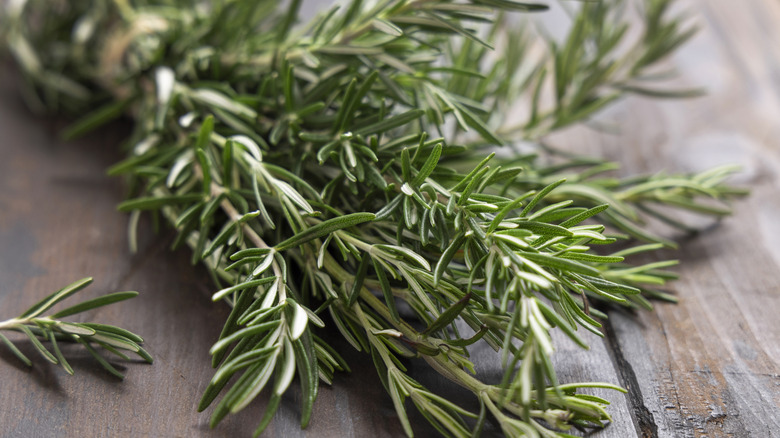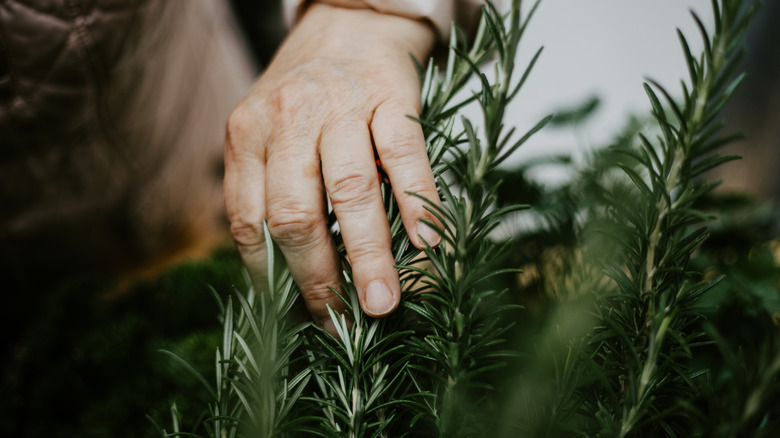When & How To Harvest Rosemary For A Healthier Plant
From the classic roast chicken and potatoes to sweet pastries with an herbal twist, there are nearly endless culinary possibilities for fresh rosemary. There are even crafts to make with rosemary plants — homemade soaps, oils, and more. This fragrant Mediterranean herb may even help discourage flying insects and other pests from ruining your cookout when you grow or burn it nearby!
If you can't get enough fresh rosemary in your kitchen and home, you'll be pleased to know that it's actually quite easy to grow and care for. It grows well in USDA Zones 8 through 10 or, in colder climates, in containers with a potting soil mix for herbs. As long as you can provide it with excellent drainage and full sun, it doesn't require much fuss to thrive. Rosemary is a slow germinator from seed, so it may be a few years before the plant is large and vigorous enough to harvest.
When you want to use the rosemary you've grown, there are a few things to keep in mind in terms of timing and technique to ensure you're getting the best taste and texture, not to mention keeping your plant healthy. Rosemary should primarily be harvested in the warmer seasons, and pruned after it's done flowering. The correct harvesting technique and timing can potentially help your rosemary plant produce more flavorful leaves, and leave you with constant access to fresh herbs. Here's how to do it.
Pruning tricks for your rosemary plant to keep it growing all year long
Technically speaking, all of this woody shrub's leaves are okay to eat, but it's best to harvest only the tender new growth to avoid a tough, unpleasant texture. Rosemary's most active growing period is during the spring and summer season, which makes this the ideal time to find the perfect young branches and leaves.
Make sure to trim established plants back just a bit once it finishes flowering every year to encourage as much new growth as possible (just avoid trimming into old wood!). If you're growing rosemary in a container, bring the plant indoors during weather that gets below freezing.
When you harvest the young stems, use sharp shears to take off 3 to 4 inches, and make sure you aren't cutting more than a third of the plant at a time. Try drying some of your harvested rosemary by hanging it upside down in a warm and dark area so you can enjoy peak flavor even during the off-peak seasons. These tender young stems are also good for propagating indoors — try propagating a crop of rosemary plants for future use as a deer-resistant evergreen ground cover!

